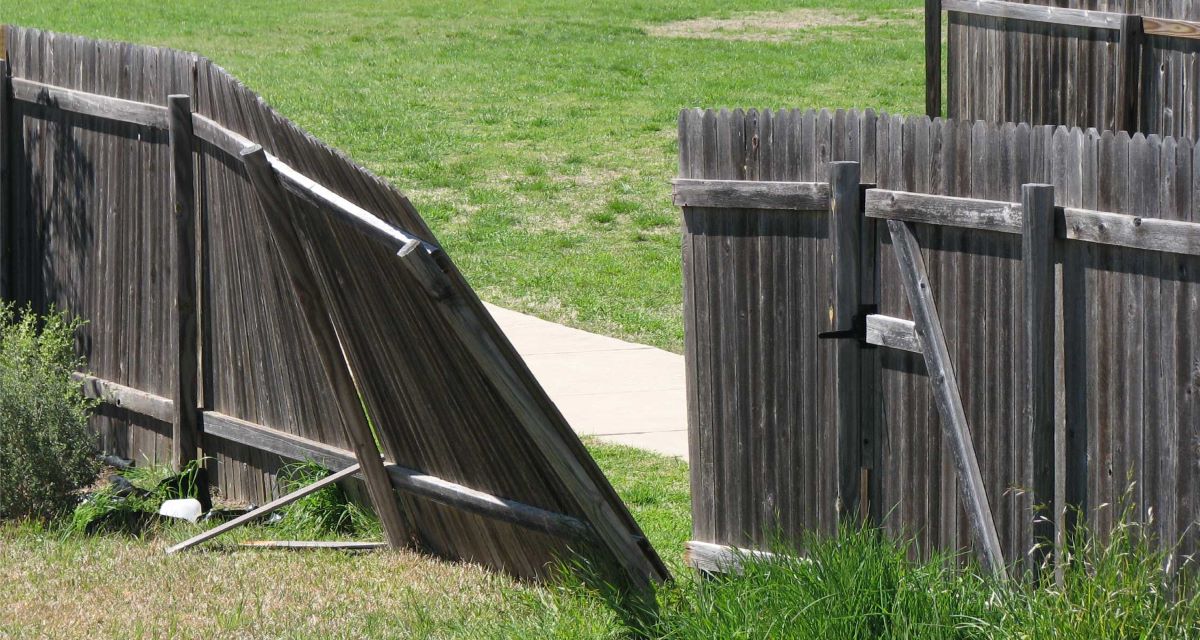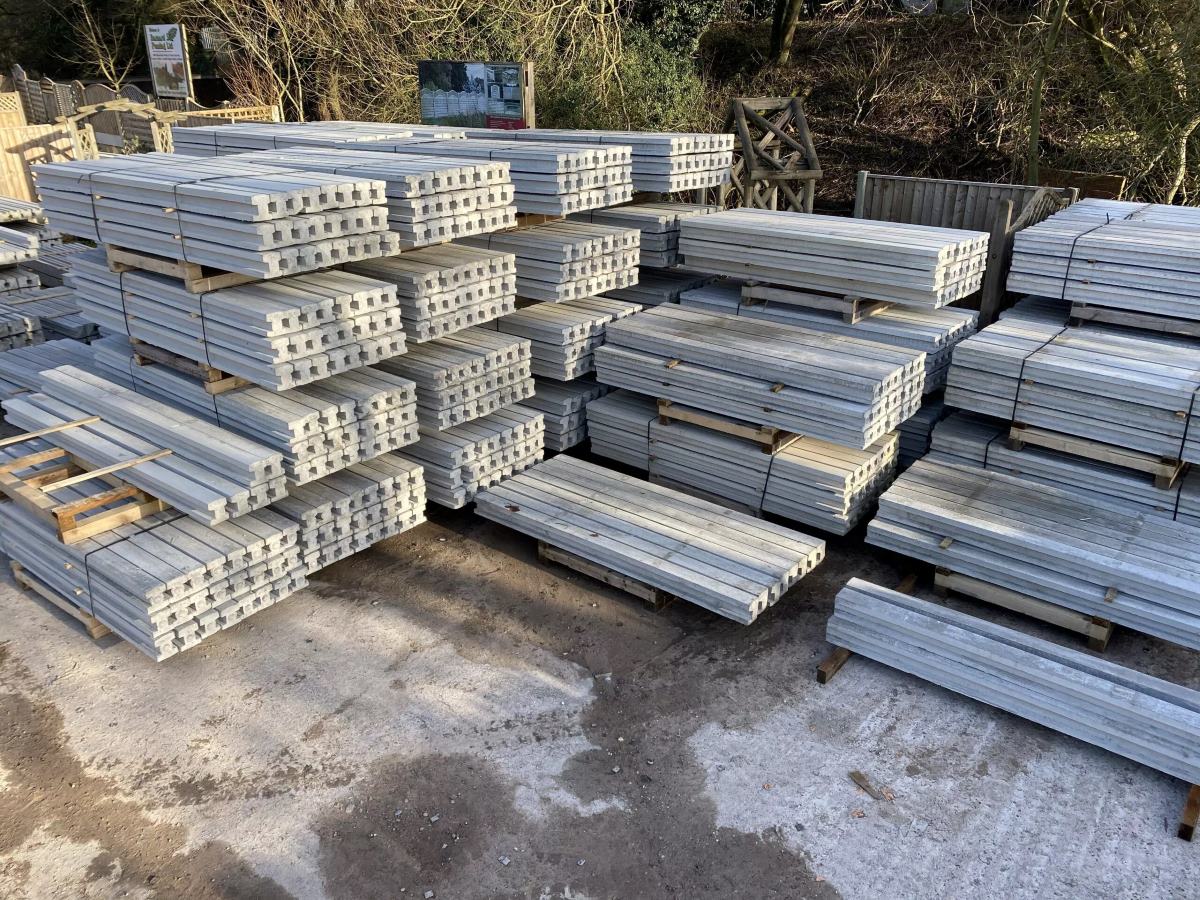

Articles
How Many Bags Of Quikrete Per Fence Post
Modified: October 20, 2024
Learn how many bags of Quikrete you will need per fence post and get expert advice on fence installation with our informative articles.
(Many of the links in this article redirect to a specific reviewed product. Your purchase of these products through affiliate links helps to generate commission for Storables.com, at no extra cost. Learn more)
Introduction
When it comes to building a fence, sturdy and secure fence posts are essential. They provide the foundation and stability for the entire fence structure. One popular option for setting fence posts is using Quikrete, a premixed concrete product that offers strength and durability.
Quikrete is a brand of concrete mix that comes in bags, making it convenient for various construction projects. It is widely used in DIY projects and professional construction settings alike. If you’re planning to use Quikrete for your fence posts, you may be wondering how many bags you’ll need for the job.
Understanding the characteristics of Quikrete and considering certain factors will help you determine the number of bags required per fence post. By accurately calculating the amount of Quikrete needed, you can save time, money, and ensure the stability and longevity of your fence.
In this article, we’ll delve into the details of using Quikrete for fence posts, including factors to consider and how to calculate the number of bags required per post. So, let’s get started and learn how to make your next fence project a success!
Key Takeaways:
- Calculate the number of Quikrete bags needed by considering post size, depth, soil conditions, and spacing. Always round up and have extra bags on hand for a successful fence installation.
- Understanding Quikrete bag size and coverage is crucial for accurately calculating the number of bags needed per fence post. Plan ahead and ensure stability and longevity for your fence project.
Read more: How To Extend Fence Posts
Understanding Quikrete
Before determining how many bags of Quikrete you’ll need for your fence posts, it’s important to have a basic understanding of this popular concrete mix.
Quikrete is a pre-blended mixture of cement, sand, and gravel, designed to simplify the process of mixing and pouring concrete. It is widely used for various applications, including setting fence posts, pouring slabs, and creating foundations.
One of the key advantages of Quikrete is its convenience. It comes in pre-packaged bags, eliminating the need to measure and mix the components separately. This not only saves time but also ensures consistent quality, as the mix is formulated to provide optimal strength and durability.
Quikrete is available in different formulations, each designed for specific applications. For fence post installation, the most suitable type is Quikrete Fence Post Mix. This variation is specifically designed for setting posts and offers quick setting times, allowing you to complete your fence project faster.
Another crucial aspect of Quikrete is its strength and durability. It is formulated to handle heavy loads and withstand the test of time, making it an ideal choice for securing fence posts. However, it’s essential to follow the manufacturer’s instructions and allow the recommended curing time for optimal results.
It’s worth noting that Quikrete is not a substitute for traditional concrete, particularly in large-scale construction projects. While it is suitable for fence post installation and other smaller applications, consult a professional if you have more extensive concrete needs.
Now that we have a basic understanding of Quikrete, let’s explore the factors to consider when determining the number of bags needed for your fence post project.
Factors to Consider
Several factors come into play when determining the number of bags of Quikrete required per fence post. Taking these factors into consideration will help you accurately estimate the quantity needed, ensuring a successful and long-lasting fence installation.
1. Fence Post Size: The size and dimensions of your fence posts will influence the amount of Quikrete required. Larger posts may require more concrete to provide adequate stability.
2. Fence Post Depth: The depth at which you set your fence posts is crucial for stability. Taller fences or areas with challenging soil conditions may require deeper post holes, which in turn will require more Quikrete.
3. Number of Fence Posts: Of course, the total number of fence posts needed will directly impact the quantity of Quikrete required. Determine the number of posts for your fence layout to calculate the necessary bags.
4. Soil Conditions: The type and condition of the soil in your area can affect the stability and support of your fence posts. If you have loose or sandy soil, you may need more concrete to ensure sufficient anchoring.
5. Environmental Factors: Consider the climate and weather conditions in your region. Harsh climates, such as extreme temperatures or high winds, may require additional concrete to withstand these conditions.
6. Fence Post Spacing: The spacing between your fence posts is another key factor. The recommended spacing will depend on the type of fence you’re installing. The wider the spacing, the fewer fence posts you’ll require, resulting in less Quikrete needed.
By carefully considering these factors and taking accurate measurements, you can determine the approximate number of bags of Quikrete needed for your fence project. Let’s explore how to calculate this in the next section.
Bag Size and Coverage
To calculate the number of bags of Quikrete needed per fence post, it’s essential to understand the bag size and coverage provided by each bag of Quikrete.
Quikrete bags typically come in sizes ranging from 40 pounds (18 kg) to 80 pounds (36 kg). The bag size refers to the net weight of the Quikrete mix inside. Larger bags are typically used for bigger projects, while smaller bags are more suitable for smaller-scale applications.
The coverage provided by each bag of Quikrete will depend on several factors, including the depth and diameter of the post hole. Generally, a 50-pound (22.7 kg) bag of Quikrete Fence Post Mix is estimated to cover approximately 0.4 cubic feet (0.011 cubic meters) of cured concrete.
It’s important to note that these coverage estimates are based on average conditions and recommended depths for fence post installation. However, actual coverage may vary depending on factors such as the type and size of the fence post, soil conditions, and climate.
To determine the number of bags needed, you’ll need to calculate the total volume of concrete required for all your fence posts and convert it into the number of bags.
Now that we have a clear understanding of bag size and coverage, let’s explore how to calculate the bags of Quikrete per fence post.
One 50-pound bag of Quikrete is typically enough for setting one fence post. However, for larger or heavier posts, or in areas with high wind or soil conditions, consider using two bags per post for added stability.
Calculating Bags of Quikrete per Fence Post
To accurately calculate the number of bags of Quikrete needed per fence post, follow these steps:
1. Determine the Volume: Begin by measuring the length, width, and depth of the post hole in inches. Multiply these dimensions together to calculate the volume of each hole in cubic inches.
2. Convert to Cubic Feet: Divide the total volume in cubic inches by 1728 to convert it into cubic feet. This step is necessary since Quikrete bag coverage is typically provided in cubic feet.
3. Calculate Bags per Hole: Divide the converted volume by the coverage per bag (in cubic feet) to determine the number of bags needed for each fence post.
4. Account for Total Posts: Multiply the number of bags per hole by the total number of fence posts to calculate the overall number of bags needed for the project.
It’s important to note that these calculations are estimates, and it’s always a good idea to have a bit of extra material on hand to account for any variations or unforeseen circumstances.
Let’s walk through an example calculation to demonstrate how to determine the number of bags of Quikrete needed for your fence project.
Read more: How To Repair A Fence Post
Example Calculation
Let’s say you’re planning to install 10 fence posts and the dimensions of each post hole are as follows: 10 inches (length), 10 inches (width), and 24 inches (depth). We’ll use a Quikrete Fence Post Mix that covers approximately 0.4 cubic feet per 50-pound bag.
Step 1: Determine the Volume
Multiply the length, width, and depth of the post hole:
10 inches x 10 inches x 24 inches = 2,400 cubic inches.
Step 2: Convert to Cubic Feet
Divide the total volume by 1728 to convert it into cubic feet:
2,400 cubic inches ÷ 1728 = 1.39 cubic feet.
Step 3: Calculate Bags per Hole
Divide the converted volume by the coverage per bag (0.4 cubic feet):
1.39 cubic feet ÷ 0.4 cubic feet per bag ≈ 3.47 bags.
Round up to the nearest whole number, and we get approximately 4 bags needed per fence post.
Step 4: Account for Total Posts
Multiply the number of bags per hole by the total number of fence posts (10 in this case):
4 bags x 10 posts = 40 bags of Quikrete needed for the entire project.
It’s always a good idea to round up to the nearest whole number when calculating the number of bags required to ensure you have enough material for the project. Additionally, consider having a few extra bags on hand for any adjustments or unforeseen circumstances that may arise during installation.
By following this calculation process, you can accurately determine the number of bags of Quikrete needed to set your fence posts securely and efficiently.
Conclusion
Calculating the number of bags of Quikrete needed per fence post is an essential step in planning and executing a successful fence installation project. By considering factors such as post size, depth, soil conditions, and spacing, along with understanding bag size and coverage, you can accurately estimate the quantity of Quikrete required.
Remember to measure the dimensions of each post hole, convert the volume to cubic feet, and calculate the number of bags per hole based on the coverage provided by the Quikrete mix. Multiply that by the total number of fence posts to determine the overall number of bags needed.
While these calculations provide estimates, it’s advisable to have some extra bags on hand to accommodate any variations or adjustments during the installation process. It’s better to err on the side of caution and have a surplus of Quikrete rather than run out in the middle of the project.
Quikrete is a convenient and reliable option for setting fence posts, offering strength and durability. It simplifies the mixing and pouring process, making it suitable for both DIY enthusiasts and professional contractors.
By accurately calculating the number of bags needed and following the manufacturer’s instructions for mixing and curing, you can ensure the stability and longevity of your fence. A well-built and properly secured fence will not only enhance the aesthetics of your property but also provide privacy, security, and peace of mind.
So, whether you’re tackling a small backyard fence project or embarking on a larger-scale installation, take the time to calculate the bags of Quikrete per fence post accurately. With comprehensive planning and the right materials, your fence will stand strong, withstand the test of time, and bring years of satisfaction.
Frequently Asked Questions about How Many Bags Of Quikrete Per Fence Post
Was this page helpful?
At Storables.com, we guarantee accurate and reliable information. Our content, validated by Expert Board Contributors, is crafted following stringent Editorial Policies. We're committed to providing you with well-researched, expert-backed insights for all your informational needs.















0 thoughts on “How Many Bags Of Quikrete Per Fence Post”